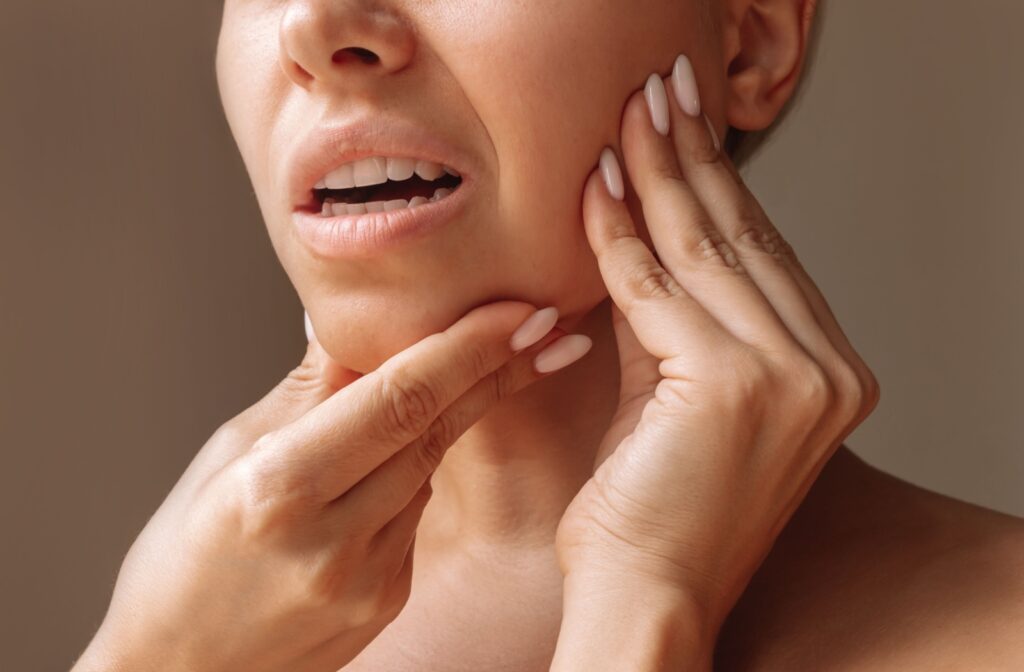Dental fillings are a routine type of restorative dentistry. They’re a great way to restore function after dealing with cavities and minor damage. But if you’ve recently had one—or are planning to have one installed—you’ll need to know how to prepare. For example: can you eat after a tooth filling?
You can eat after a tooth filling, but you need to be careful for a few days. Your dentist will give you specific guidelines to promote a swift recovery. Make sure to avoid chewing on the side with the filling and follow proper dental care practices at all times.
What Are Dental Fillings For?
Sometimes, dental damage is unavoidable. You might deal with cavities, chips, or any other kind of decay or trauma. This is normal, and fortunately, it’s also easily treatable with a dental filling.
These fillings are an ideal way to restore the normal function of your teeth after damage. They can prevent further damage and protect sensitive areas from exposure. These fillings restore your tooth’s integrity and prevent bacterial spread to other areas.
Without a filling, even minor damage can open up your tooth to further decay. A filling is about more than just patching up a problem—it gives your teeth a long-lasting shield against infections and significant damage.
How Are Dental Fillings Installed?
The goal of a filling is to clean the damaged area, reinforce the tooth, and make sure it’s protected against future damage and bacteria. Getting a filling is extremely straightforward. It’s a regular part of restorative dentistry, so the procedure is simpler than most people think.
To install a filling, there are a few steps:
- The dentist will examine the tooth and may take an X-ray to check the extent of decay.
- They’ll apply local anesthesia to keep you comfortable.
- The damaged or decayed part of the tooth will be cleaned away.
- The filling material will be applied, sometimes in layers for added strength.
- Each layer will be hardened using a special light.
- The filling will then be shaped and polished to match the rest of your tooth.
The final filling can be made of several materials, including amalgam, porcelain, composites, and even gold. Your dentist will walk you through your options to help find a material that meets your unique needs.
Tips For Recovering From Dental Filling Installation
After your filling is installed, you’ll rest for a short period of time before going home. Your dentist or surgeon will give you a set of instructions—make sure to follow these to the letter. These are key to preventing discomfort and avoiding damaging the new filling.
For the first few hours, it helps to avoid food and drink while everything settles. You’ll also likely notice sensitivity to hot or cold textures for a short time. These are entirely normal, and they should fade with time.
Over the next few days, make sure to:
- Avoid chewing on the side of your mouth with the new filling to ensure it sets properly.
- Stick to soft foods and avoid anything sticky or hard that could dislodge the filling.
- Brush and floss gently around the filling to maintain oral hygiene without causing irritation.
- Monitor for any persistent pain or unusual discomfort, and contact your dentist if these occur.
If you ever notice something unusual, like persistent discomfort or sensitivity, reach out to your dentist. They can examine the area to make sure nothing is wrong.

Foods to Avoid After a Dental Filling
For the first week after a dental filling is installed, certain foods are tricky to manage. Try to avoid:
- Sticky candies like taffy and caramel
- Chewy foods such as gum
- Hard nuts or seeds
- Crunchy chips or crackers
- Hot beverages like coffee or tea
- Anything overly sugary
- Tough meats like steak
These all put too much stress on the area. They add pressure and new bacteria to an already sensitive area. So for the first short time, aim for soft, lukewarm foods like soups, smoothies, or mashed vegetables. These are gentler on your teeth while still keeping you satisfied.
Are Dental Fillings Permanent?
Dental fillings are built to last, but they aren’t permanent. The average lifespan can range from 5 to 15 years. This does depend on the type of material used, where the filling is located, and your own dental health.
To keep your fillings in good shape, make sure to:
- Brush your teeth twice a day with fluoride toothpaste.
- Floss daily to remove food particles between your teeth.
- Avoid chewing hard foods or objects that can damage fillings.
- Limit sugary snacks and drinks to prevent decay around fillings.
Regular dental check-ups are also important here. Your dentist can regularly inspect the filling for signs of wear and replace it if necessary. This way, you can keep a damaged tooth protected for years to come.
How To Tell If It’s Time To Replace A Dental Filling
Even with proper care, diet, and nutrition, there will likely be a point when your fillings need replacing. If you notice any discomfort or irritation near your filling, don’t ignore it. This could be a sign of the filling weakening. But don’t worry—our team at Dentistry on Danforth is here to help! Book an appointment with us today, and together, we can keep your smile bright and strong.


